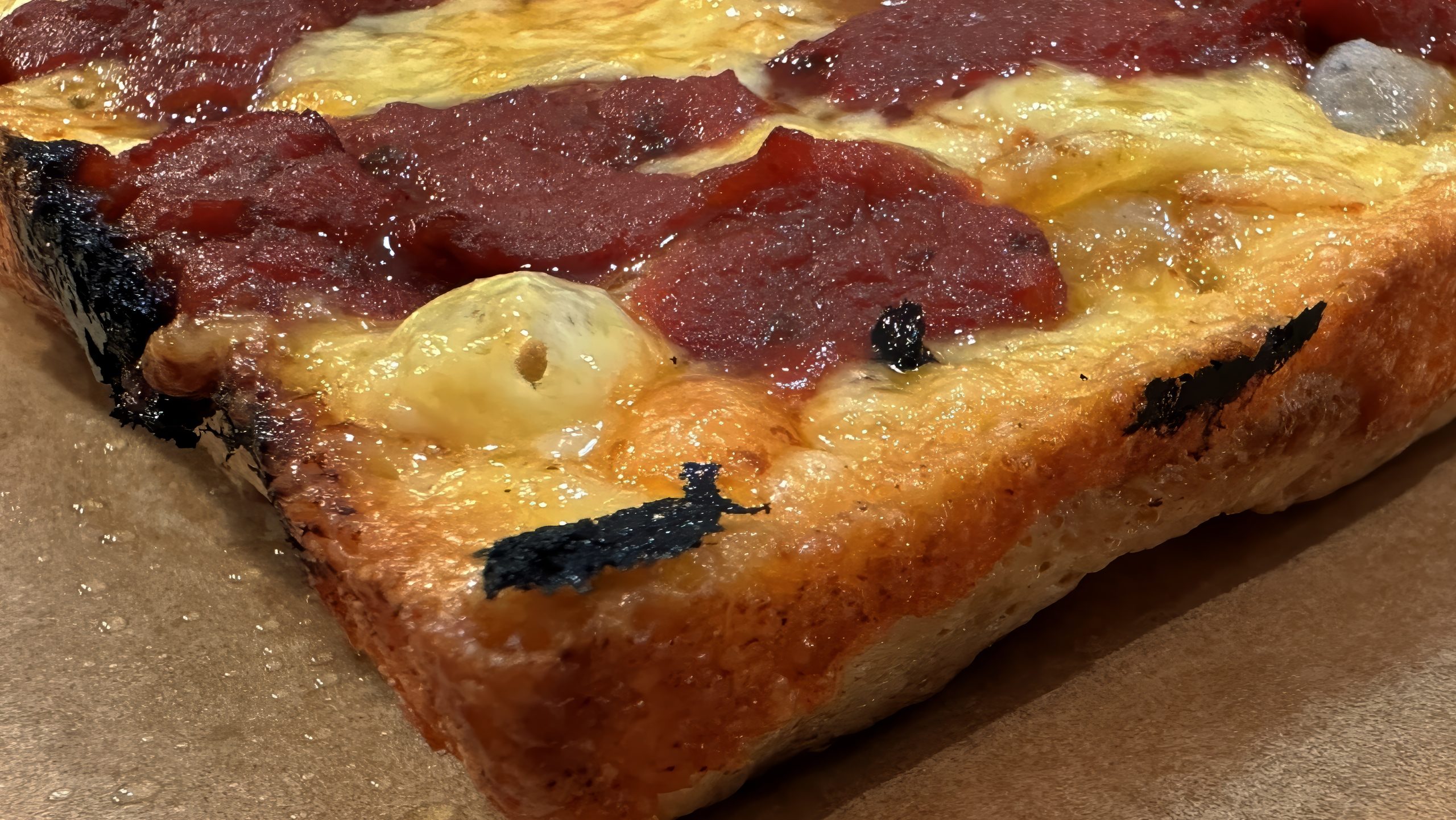
Detroit Pizza
Detroit-Style Pizza: Motor City’s Square Slice Revolution
In the pantheon of American pizzas, Detroit-style stands apart – a testament to industrial ingenuity and the city’s automotive heritage. Born in the post-war boom of the 1940s, this distinctive square pie first emerged at Buddy’s Rendezvous, where automotive parts trays, originally used to store small machine parts, were repurposed as pizza pans. These blue steel pans, with their high sides and excellent heat conductivity, would become the cornerstone of a new pizza tradition.
What sets Detroit-style pizza apart is its architectural approach to layering. Unlike traditional pizzas, it begins with a thick, high-hydration dough that, when baked, creates a light, airy crumb structure reminiscent of focaccia. The high edges of the industrial pans allow the dough to climb during baking, creating a caramelized crust that pizza enthusiasts call “the crown.” This crust, when properly executed, offers a satisfying crunch that gives way to a chewy interior.
Perhaps most iconoclastic is the layering sequence. Wisconsin brick cheese, a semi-soft cheese with a high butterfat content, is cubed rather than shredded and spread edge to edge. During baking, the cheese melts into every corner of the pan, creating the signature caramelized edges that Detroit pizza is famous for. The sauce, rather than forming the base, is typically applied last in thick, bold stripes across the top – a technique known as “racing stripes” in homage to the city’s automotive culture.
This reversal of the traditional pizza construction isn’t mere novelty. The cheese-first approach allows the fats to protect the dough from becoming soggy, while its direct contact with the hot pan creates a lacy, crispy cheese crust that has become the style’s hallmark. The late application of sauce ensures it remains bright and vibrant, providing a fresh contrast to the rich, caramelized underpinnings.
The style remained a regional specialty for decades, beloved in Michigan but relatively unknown elsewhere. However, in the past decade, Detroit-style pizza has emerged as a national phenomenon. Artisan pizzerias across the country now offer their interpretations, while major chains have introduced Detroit-style options to their menus. This expansion hasn’t diluted its character – if anything, it’s strengthened the appreciation for the technical precision required to achieve those perfectly caramelized edges and airy crust.
Detroit-style pizza embodies its city’s spirit – practical in its origins, innovative in its execution, and unapologetically bold in its presentation. It’s a reminder that great food often emerges from the intersection of necessity, available materials, and the creative spirit of working-class communities. In every pan-formed corner and racing stripe of sauce, you’ll find a slice of Detroit’s industrial heritage, transformed into something uniquely delicious.
I’ve always been a fan of Sicilian pizzas – especially the sweet sauce that usually accompanies it. The issue here is that it’s so hit and miss when it comes to local pizzerias. There was a spot where I used to live called Joe’s pizza that crushed the Silician pie. I used to crave it and sometimes, even after I moved 40 minutes away, I’d swing back and get it just to scratch that itch. I haven’t been able to find a good Sicilian pizza around me so I’ve been tinkering with different combos of dough, sauce, and cheese to try to recreate that memory of the perfect square slice.